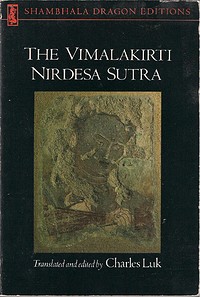Status
Collection
Publication
Description
One of the most popular Asian classics for roughly two thousand years, the Vimalakirti Sutra stands out among the sacred texts of Mahayana Buddhism for its conciseness, its vivid and humorous episodes, its dramatic narratives, and its eloquent exposition of the key doctrine of emptiness or nondualism. Unlike most sutras, its central figure is not a Buddha but a wealthy townsman, who, in his mastery of doctrine and religious practice, epitomizes the ideal lay believer. For this reason, the sutra has held particular significance for men and women of the laity in Buddhist countries of Asia, assuring them that they can reach levels of spiritual attainment fully comparable to those accessible to monks and nuns of the monastic order. Esteemed translator Burton Watson has rendered a beautiful English translation from the popular Chinese version produced in 406 C.E. by the Central Asian scholar-monk Kumarajiva, which is widely acknowledged to be the most felicitous of the various Chinese translations of the sutra (the Sanskrit original of which was lost long ago) and is the form in which it has had the greatest influence in China, Japan, and other countries of East Asia. Watson's illuminating introduction discusses the background of the sutra, its place in the development of Buddhist thought, and the profundities of its principal doctrine: emptiness.… (more)
